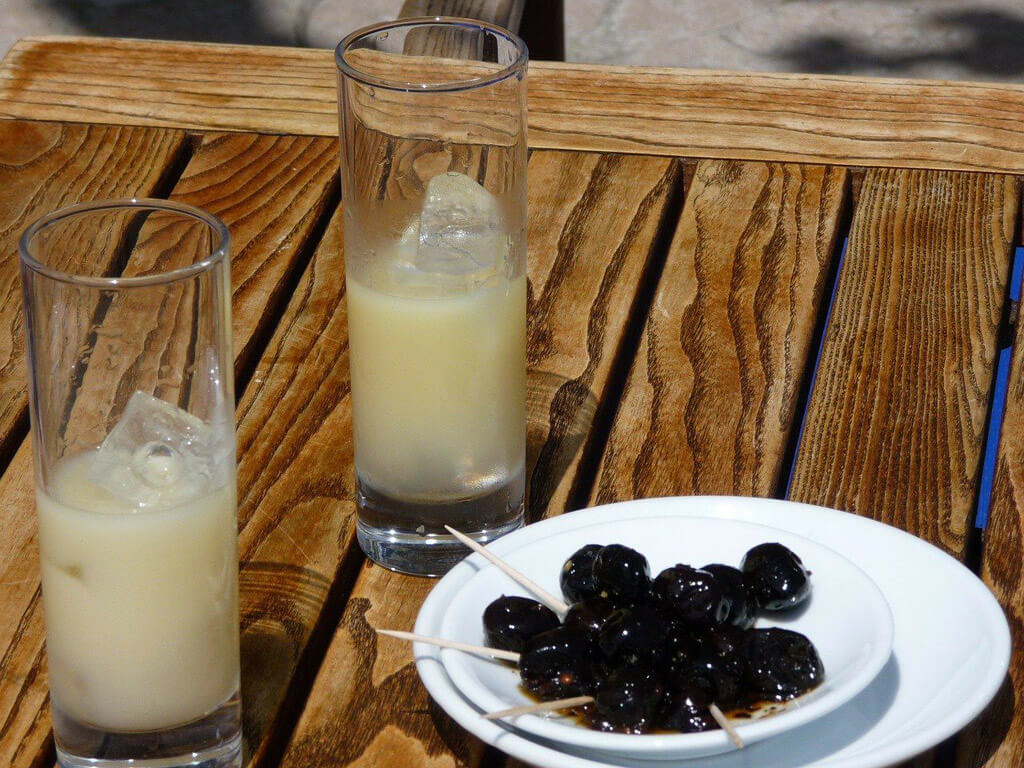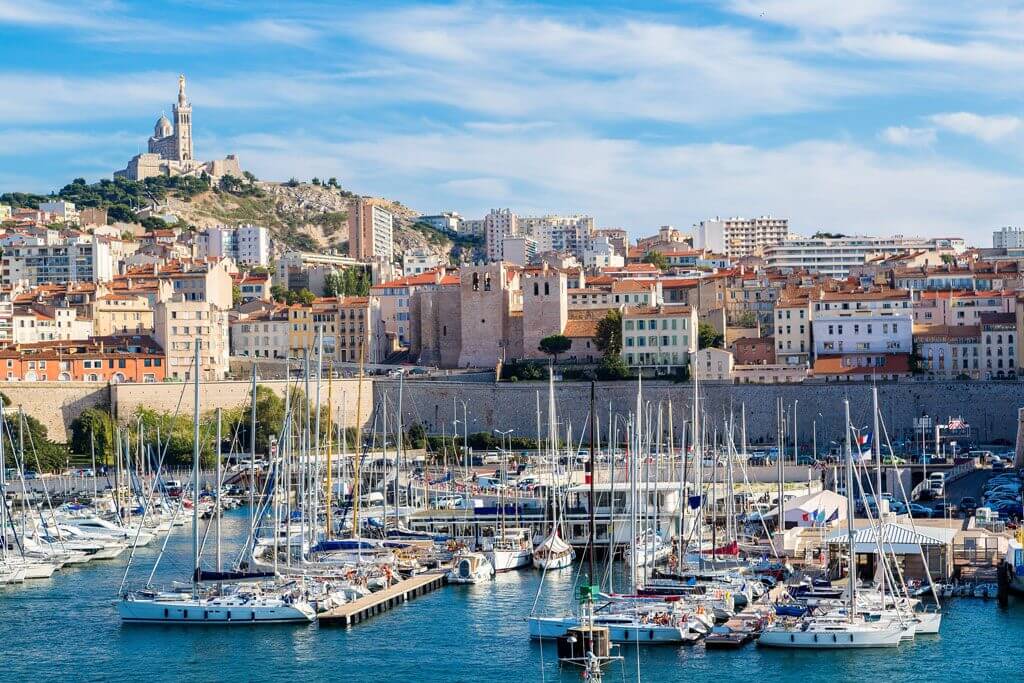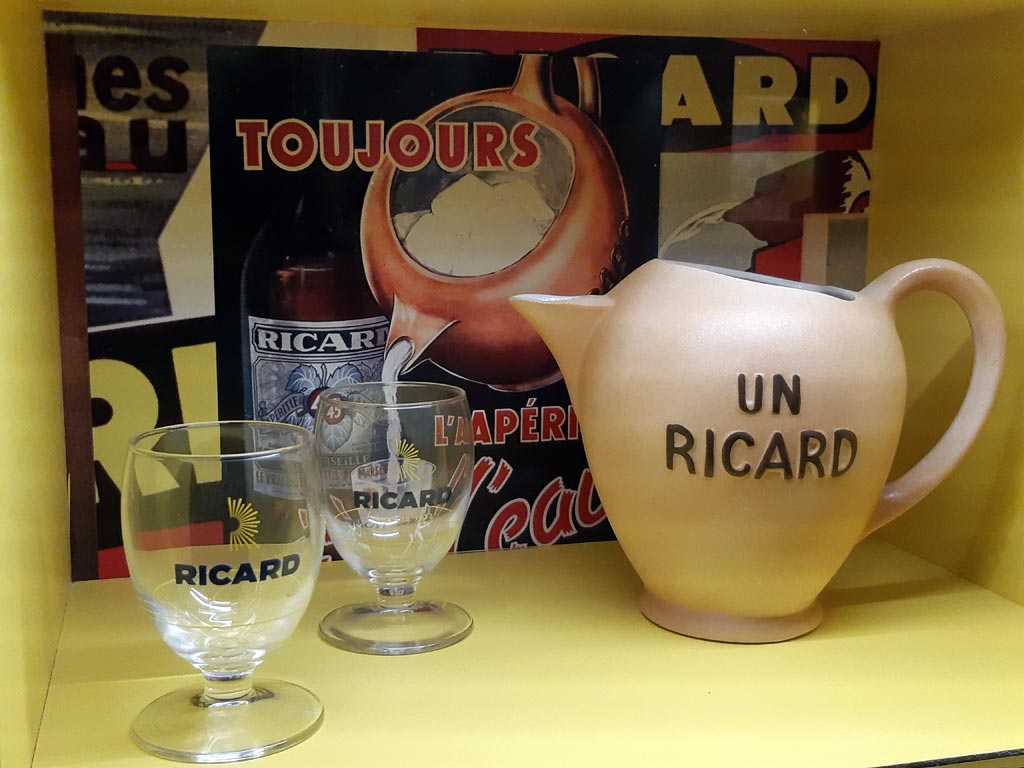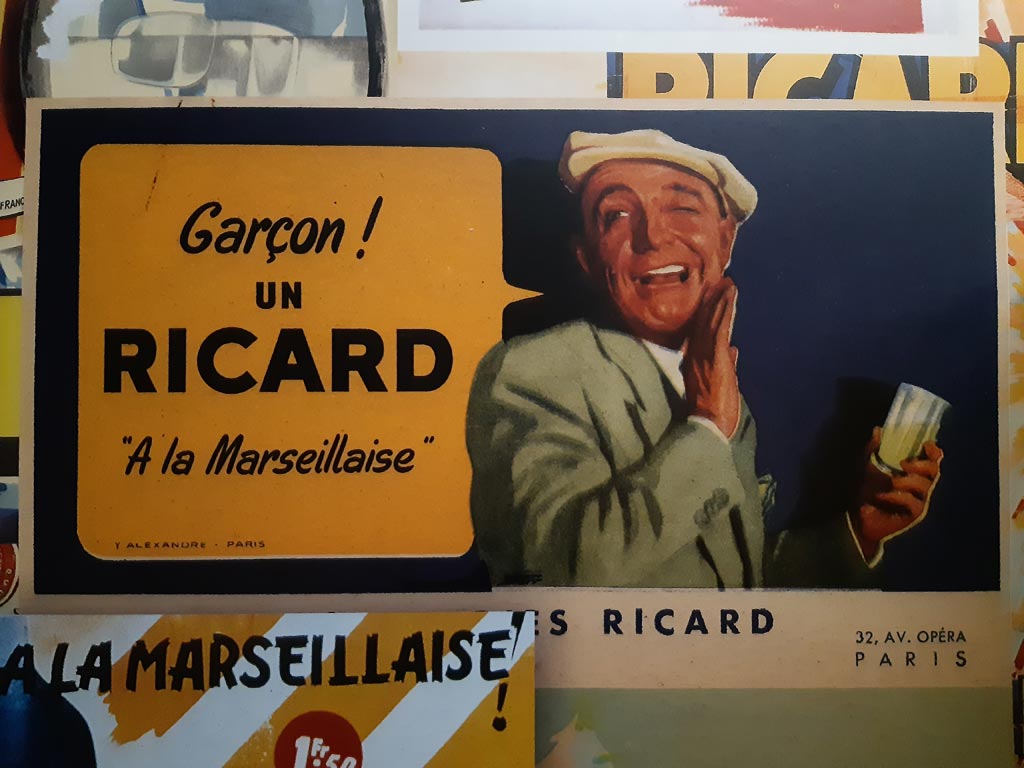Article written by Elisa - Travel Writer & Local in France
This article may contain compensated links. Please read disclaimer for more info.
All about the Pastis Drink! History, Facts & Best Pastis Brands
09/09/2023Pastis is a French aniseed drink primarily associated with Provence and especially Marseille. This alcoholic drink is particularly favored and appreciated by the French as an apéritif in the evening after work, Sunday lunchtime, or anytime on holidays. To this day, pastis is still one of the most popular drinks in France, with an annual consumption of 130 million liters.
Pastis means ‘mixture’ in the Provençal language. The pastis drink has several nicknames like rifflon, ricou, pastaga, or petit jaune (little yellow) due to its color. This alcoholic drink is generally made with water, alcohol at 40º-45°, and a mixture of several plants such as licorice and star anise. There are more than 72 plants rigorously selected for use in manufacturing the different versions of Pastis.

Drinking a glass of pastis is one of the best things to do in Marseille. For us, pastis is “Provence in a bottle,” and we love sitting on a terrace in the shade of a linden tree on a hot summer’s day, sipping a glass of pastis to the sound of cicadas and watching the world go by.
So before you drink another glass of pastis drink, here’s all about the Pastis – history, best pastis brands, how to drink pastis, and some fun pastis facts that you probably didn’t know yet!
What is pastis? It’s an aniseed-flavored drink, typical of Marseille and the South of France, usually taken as an apéritif.
History of Pastis

The Ban on Absinthe
Pastis is a cousin of absinthe, another aniseed-flavored drink. The sulfurous aniseed drink was much appreciated in the 19th century by artists such as Henri de Toulouse-Lautrec and Paul Verlaine, who used to drink it in the cafés à la mode and popular cabarets. They nicknamed it “green fairy” for its dominant green color and supposed magical effects!
Absinthe’s immense popularity and high alcohol content (between 68º and 72º) quickly made it one of the symbols of alcoholism. Hygienists and wine lobbies campaigned against absinthe, which they accused of driving its consumers crazy.
In 1915, the French Government banned the fabrication, sale, and circulation of absinthe and similar liquors, which also implied its consumption. The law text was so vague that it penalized all the French aniseed drinks.
The Provencal ‘Art de Vivre’
But around Marseille, the habit of fresh water, anise, and licorice combined with other aromatic plants persisted. There were already Marseille absinthes made from licorice and anise (star anise rather than green anise). The rhythm and the ‘good Provençal life’ naturally favored the production of these aniseed apéritifs, constantly reinvented according to the inspirations of bar owners and wine merchants, and this in total illegality.
In 1920, the French State authorized aniseed-based alcoholic drinks, but only with a maximum of 30° alcohol.
At the end of the 1920s, Paul Ricard, son of a wine merchant in Marseille, seized on the idea and marketed an aniseed apéritif with his name. Defying the authorities, Paul Ricard widely distributed this prohibited alcohol (40º), so he was constantly fined by the police and customs authorities.
Ricard, Pastis de Marseille
After intense lobbying work, Paul Ricard obtained authorization to operate by decree in 1932. He was asked to find a name for his drink and define it. Paul Ricard was the first producer to write the name “pastis” on the bottle label of an aniseed apéritif in 1934, creating the first pastis brand.
Thanks to an inventive marketing strategy (“Ricard, le vrai Pastis de Marseille”), the Ricard Pastis was an immediate success! After “conquering” the South of France, the Ricard Pastis arrived in Lyon, where it was most welcome. With the establishment of the congés payés (paid holidays) in 1939, the French could travel South and discover the wonders of Provence and its Marseille pastis.
In 1938, French legislation allowed alcoholic beverages with a maximum of 45° alcohol. Paul Ricard seized the opportunity and also increased the alcohol degree of his Pastis drink to 45°, its natural degree.
Pastis Recipe
Generally, the basic aromatic ingredients used by all producers are anise and licorice. They give the pastis drink its unique aroma and flavor. In addition, the drink is enriched with other ingredients, but their quantity and selection are a well-kept secret of each manufacturer. So there is more than one pastis recipe, but all the pastis recipes are secret 😉
How is Pastis Made?
The production of the pastis drink is tedious work that requires rigor and experience. The liquor is obtained by the maceration of different plants in water, oil, or alcohol for several days or weeks.
After the maceration, there’s the draining stage which consists in extracting the juice. The residues are then treated in an apparatus called alembic that separates the different elements necessary for the production of Pastis by a process of heating at a high temperature followed by cooling. At the end of the treatment, the distillate is recovered. The aromas are obtained thanks to the alcohol vapors.
The last stage of the process consists of mixing the distillates while adding pure water and anethole. The aim is to obtain an alcohol content not exceeding 45°.
How to Drink Pastis Like a Local

Pastis is an ideal summer apéritif. It’s refreshing, transporting, and it comes with a show. The simple process of preparing the pastis drink is a kind of entertainment itself. There are several possibilities, but the traditional way is the following:
First, serve the pastis in a glass. Then, pour the fresh water, and you will see that the liquid in the glass quickly turns milky and pearlescent. Finally, add one or two ice cubes (depending on the size of the cubes and the glass). Never add the ice cubes before the freshwater!
There is usually 2 cl of pastis – vulgarly nicknamed ‘une couille’ (a man’s ball). Then, you must have at least 10 cl of fresh water. Pastis can also be served with mint syrup, orgeat syrup, or even grenadine, and there are also pastis-based cocktails.
On the terrace, you can sip a glass of pastis to the sound of cicadas, never alone, perhaps playing cards with a friend… Bonus if you can drink a glass of pastis drink at Marseille’s Vieux Port, people-watching. The price of a glass of Pastis is between €1.60 and €3.50.
Best Pastis Brands

There are many brands of pastis, but not all of them are from Marseille or Southern France. The main French producer of pastis is the Pernod-Ricard company, created in 1975 following the merger of two previously very competitive companies. Their best-known pastis brands are Ricard and Pernod 51.
The primary flavors are derived from licorice, star anise, and fennel, though there are many other herbs and spices. Licorice is dominant in Ricard, while Pernod derives its flavor more from star anise and fennel. Most people prefer Ricard because it is a little sweeter than the drier Pernod.
Then, there are pastis brands such as Duval, Berger, and Casanis. Distilleries and Domaines de Provence is also known for producing a Pastis drink that professionals highly appreciate for its noble and refined character.
Best Pastis Brand
Last but not least, let us tell you that for the second consecutive year, the world’s best pastis is from… Lyon! The Anis des Gones from the Distillerie de Lyon has just been awarded again at the World Drinks Awards after having already won this distinction in 2022. Moreover, the second pastis of this best pastis brand, with a more amber color, arrived third on the list of best pastis drinks.
Pastis or Pastis de Marseille?
In France, there’s Pastis and Pastis de Marseille. To be entitled to the name Pastis de Marseille, Pastis must have an alcohol content of 45% and an anethole concentration of 2 g/L1.
Due to its higher anethole content than a common pastis drink, it is much more sensitive to cold. Cloudiness appears from 8ºC or even 10°C. As soon as it is brought back to room temperature, the cloudiness disappears quickly, without the product having any alteration in its quality or its taste.
Mx Experience – The Pastis Museum in Marseille

In 2021, Pernod–Ricard set up their new headquarters within Marseille’s renovated Docks in La Joliette neighborhood. Here, they also created the Mx Experience, a museum showcasing the anise and the wonders of the South of France.
The Mx Experience is much more than a simple exhibition. This interactive, digital, and innovative place invites visitors on a journey that appeals to their five senses. Learn about anise in general and pastis drink through a mix of interactive experiences.
The pastis museum is complete with a concept store and a pastis bar, where you can have a tasting (included in the ticket price) – Mx Les Docks, 10 Place La Joliette, Marseille 2

